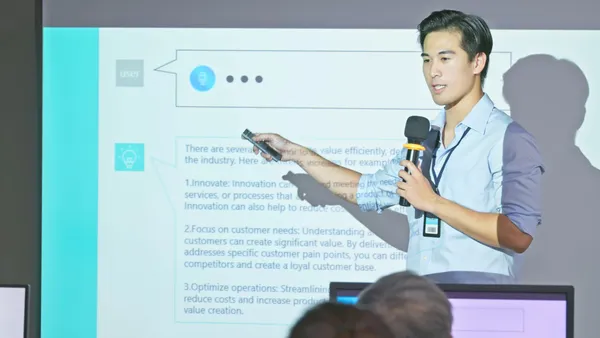Dive Brief:
-
Technology-based microcredential professional development programs allow districts to personalize lessons and are especially valuable for teachers in rural schools who can remotely access them, Jennifer Carroll and Robert Brown of the Kentucky Valley Educational Cooperative (KVEC) write for eSchool News.
-
The cooperative works with experts to develop a curriculum that reflects unique issues the region's teachers face while working in high-poverty, rural communities.
-
On-demand classes allow teachers to access programming at their convenience through an online platform, and teachers can create videos to show how they applied their new skills in the classroom.
Dive Insight:
Microcredential PD programs are gaining popularity as more districts implement them for teachers to select, learn and demonstrate their strengths and skills. While not a substitute for more robust professional learning, these programs can be tailored to any aspect of the career — from learning to work with parents to gaining skills for leadership roles — where an educator needs or wants to improve.
That added personalization allows more ownership in professional learning, while also providing convenient access for teachers who would otherwise have to travel great distances for personalized opportunities based on their career interests.
In rural Pennsylvania, Nicole Donato of Big Spring High School launched a “best practices group” to give teachers PD options that are individually relevant but still meet the district’s agenda. For example, a teacher may have a student on the autism spectrum in their class for the first time, so a microcredential on supporting special needs students is relevant to that teacher.
Earning the credential also lets teachers promote their new skills through acknowledgements, like badges, that can be showcased on work-related social media platforms or resumes.













